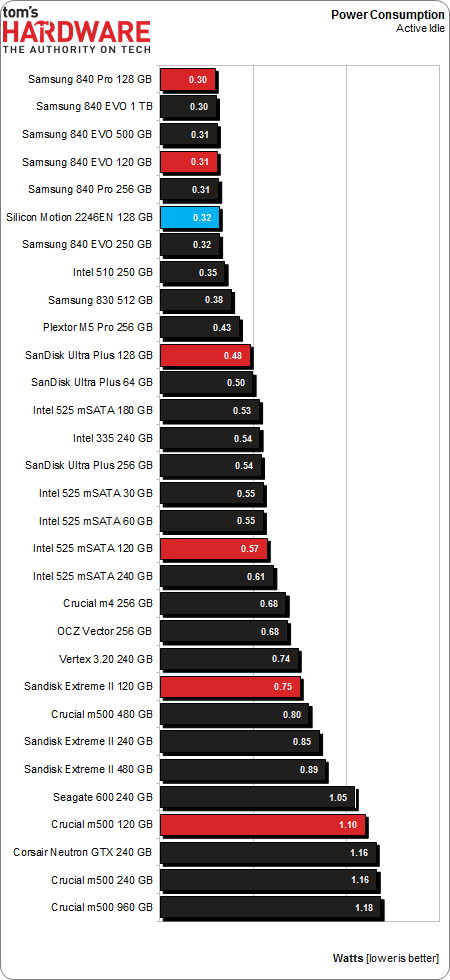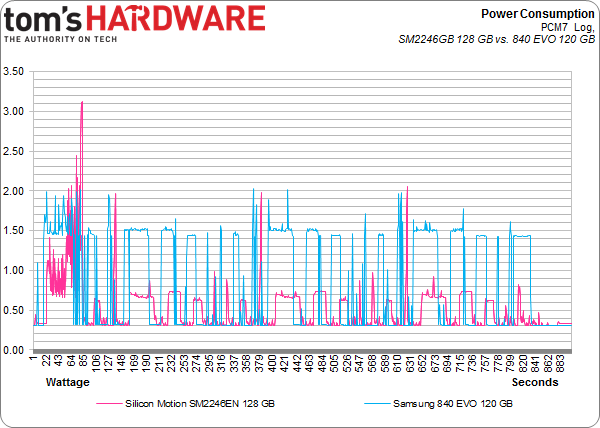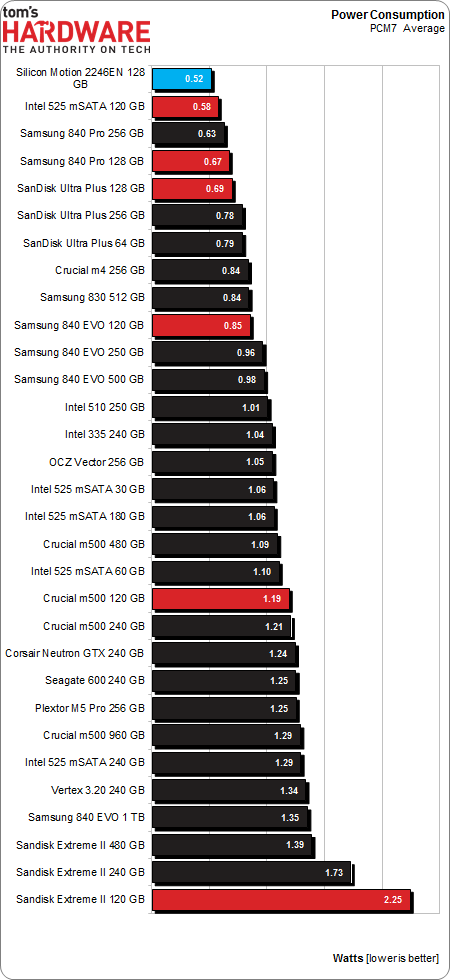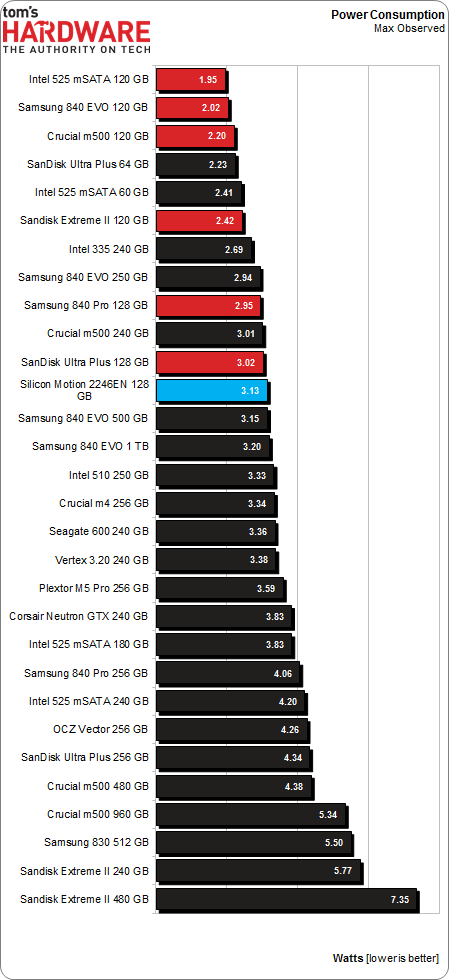Hands-On With Silicon Motion's New SSD Controller
Silicon Motion already makes flash storage controllers in all shapes and sizes. Now, with a new SATA 6Gb/s processor ready for action, the Taiwanese firm is hoping to make a dent in the market share currently enjoyed by SandForce and Marvell.
Results: Power Consumption
Idle Power Consumption
Idle consumption is the most important power metric for consumer and client SSDs. After all, solid-state drives complete host commands quickly, and then drop back down to idle. Aside from the occasional background garbage collection, a modern SSD spends most of its life doing very little. Enterprise-oriented drives are more frequently used at full tilt, making their idle power numbers far less relevant. But this just isn't the case on the desktop, where the demands of client and consumer computing leave most SSDs sitting on their hands for long stretches of time.
It might sound funny, but this is the page we were waiting for. Optimized efficiency is purportedly the goal Silicon Motion has in mind for this platform. The company demonstrates active power consumption just behind what we've measured from most of the Samsung drives. The 128 GB 840 Pro maintains its first-place finish, though the reference SM2246EN-based SSD breaks out an impressive .32 W result.
Keep in mind that this is an active idle state, and that drives like Silicon Motion's are capable of dropping into much lower power states. Also, we have to point out that measuring true power consumption is a tricky business, and that there is likely a 5% or so margin of error.
PCMark 7 Average Power Consumption
If we log power consumption through a workload, even a relatively heavy one, we see that average use is still pretty close to the idle numbers. Max power may spike fiercely, but the usage seen during a PCMark 7 run is pretty light. You can see the drives fall back down to the idle "floor" between peaks of varying intensity.
I picked the 120 GB 840 EVO to pit against Silicon Motion's test mule. Is it a fair comparison? Not necessarily. Samsung's triple-level cell flash needs more juice than Toshiba's MLC NAND, and it's reasonable to expect higher power consumption when these drives are juggling more taxing workloads. Moreover, the SM2246EN-based SSD uses twice as many dies, too.
Get Tom's Hardware's best news and in-depth reviews, straight to your inbox.
Silicon Motion uses almost exactly the same power as Samsung's sample, but generally uses a lot less while working on Futuremark's tests.
And that performance is good enough for an average PCMark 7 power figure of .55 W, which takes the top spot from the 840 Pro by a nose.
Maximum Observed Power Consumption
It's even better news that maximum power consumption isn't a critical specification for most desktop workloads. In the enterprise space, yes. This information goes into the calculation for total cost of ownership. But in a client environment, you shouldn't be seeing these numbers for more than short bursts.
In exchange for those compelling average power numbers, Silicon Motion's reference drive exhibits the highest measured maximum power consumption of any 128 GB-class SSD. That's likely a side effect of Toshiba's Toggle-mode flash. With all of those dies firing in parallel, maximum power is usually a function tied to the NAND, even if the controller can use a lot of juice as well.
Current page: Results: Power Consumption
Prev Page Results: Robocopy File Transfer Next Page Silicon Motion Kicks The Tires And Lights The Fires-
rolli59 Performance looks good, the question is with a new player on the market if it will affect market price to the benefit of users that have SSD boot/program drives up to 256GB.Reply -
4745454b While performance wasn't the best, it was more then acceptable. And then the power numbers looked great. Overall it's a great start. I'm interested in long term results as some controllers have had bugs in the past that have done bad things to people's data.Reply
And yes, great to see someone else enter in. While more players means you'll need to look harder at what SSD you are buying, at least we'll have the options. Which is always good, even if the options aren't as good as what you were hoping for. -
shin0bi272 Not that this isnt kinda cool but Taiwan is now part of China so its proper to call it China.Reply -
UmeNNis Reply11339051 said:Not that this isnt kinda cool but Taiwan is now part of China so its proper to call it China.
Ummm..... how exactly is "Taiwan now part of China"...?:sarcastic: -
mayankleoboy1 During the benchmarks, did you ensure that the Samsung EVO is not throttling due to high temps ?Reply
Maybe add a max temperature graph as well. -
e-z e Given time to mature this could be a real contender. Would love to see a follow-up once it hits the market.Reply -
zads Reply
If only this were the case, my job would be so much easier.11337088 said:Meanwhile, SandForce is the opposite. It'll sell you a turnkey solution, but you don't really get many knobs or dials in terms of customization.



